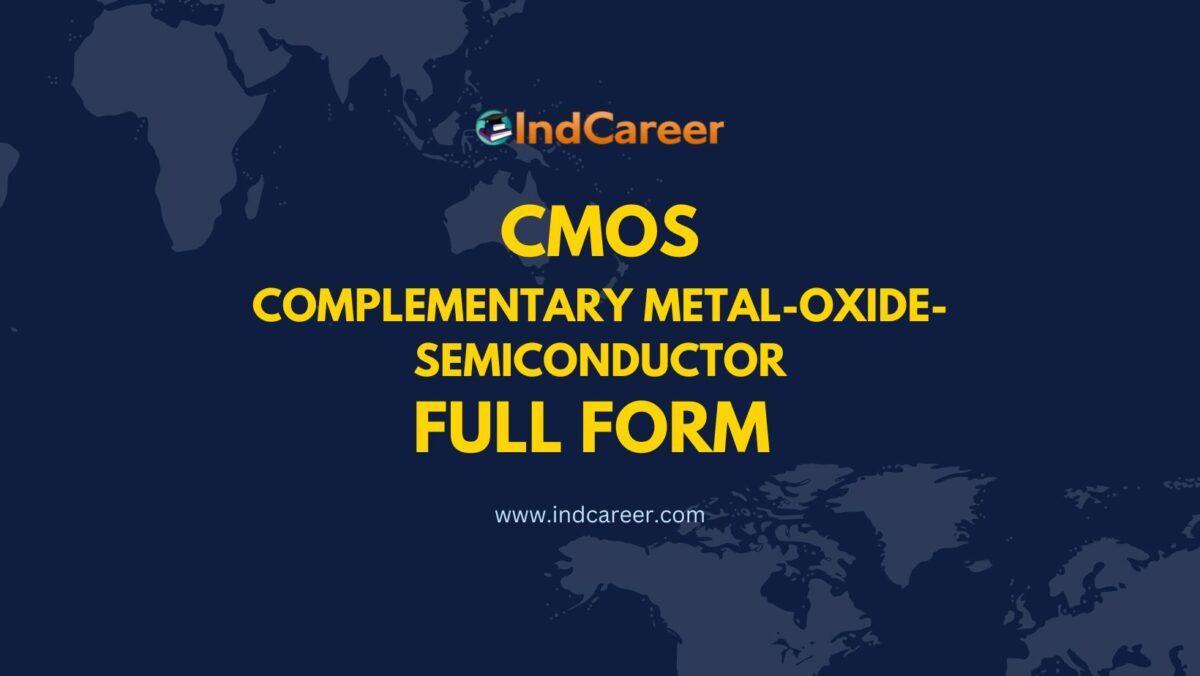Contents
The world of technology is full of abbreviations and acronyms. One such commonly used abbreviation in the field of electronics is CMOS. If you have come across this term and wondered what it stands for, you have come to the right place. In this article, we will discuss the full form of CMOS, its significance, and various other aspects related to it.
CMOS, or Complementary Metal-Oxide-Semiconductor, is a technology used in the design and fabrication of integrated circuits (ICs). It is a type of semiconductor technology that involves the use of both p-type and n-type metal-oxide-semiconductor field-effect transistors (MOSFETs) on a single integrated circuit chip.
What does CMOS stand for?
CMOS stands for Complementary Metal-Oxide-Semiconductor.
Understanding CMOS technology
CMOS technology is widely used in the manufacturing of digital logic circuits, microcontrollers, microprocessors, memory chips, and other electronic components. It offers advantages such as low power consumption, high noise immunity, and high integration density.
CMOS circuit operation
In CMOS technology, a digital logic circuit operates by using a combination of n-type and p-type MOSFETs. The MOSFETs are controlled by voltage levels to switch between conducting (logic 1) and non-conducting (logic 0) states. This allows for efficient digital signal processing and data storage.
Applications of CMOS
CMOS technology has found widespread applications in various fields. Some key areas where CMOS is used include:
Consumer electronics
CMOS technology is extensively used in the production of consumer electronic devices such as smartphones, digital cameras, tablets, and portable media players. It enables efficient power management, increased battery life, and high-performance processing capabilities.
Computer systems
CMOS technology plays a vital role in modern computer systems. It is used in processors, memory modules, and input/output interfaces. The low power consumption of CMOS-based devices is especially beneficial for laptops and notebooks.
Medical devices
CMOS technology has made significant contributions to the field of medical devices, including implantable medical devices, health monitoring systems, and medical imaging equipment. The low power requirements and high integration density of CMOS chips make them suitable for such applications.
Advantages and disadvantages of CMOS
Like any other technology, CMOS has its own set of advantages and disadvantages. Let’s take a closer look:
Advantages of CMOS
- Low power consumption: CMOS circuits consume very little power, making them ideal for portable and battery-powered devices.
- High noise immunity: CMOS circuits are less susceptible to noise and interference, ensuring reliable operation.
- High integration density: CMOS technology allows for the integration of a large number of transistors and components on a single chip, leading to compact and efficient designs.
- Compatibility with digital logic: CMOS is well-suited for digital logic circuits, enabling fast and efficient processing of digital signals.
Disadvantages of CMOS
- Complex manufacturing process: CMOS technology involves complex fabrication processes, which can increase production costs.
- Limited analog performance: CMOS circuits may not perform as well in analog applications compared to specialized analog circuits.
- Susceptibility to radiation damage: CMOS devices can be sensitive to radiation, which can affect their performance in certain environments.
Future prospects of CMOS
CMOS technology has continuously evolved and improved over the years. The future prospects of CMOS look promising, with ongoing research and development focusing on advanced manufacturing techniques, higher integration density, and improved performance. These advancements are expected to drive the growth of CMOS-based technologies in various industries.
Conclusion
In conclusion, CMOS stands for Complementary Metal-Oxide-Semiconductor and refers to a technology used in the design and fabrication of integrated circuits. Its advantages, including low power consumption, high noise immunity, and high integration density, make it a popular choice in numerous applications such as consumer electronics, computer systems, and medical devices. Despite some limitations, CMOS technology continues to evolve, ensuring a promising future in the field of electronics.
Frequently Asked Questions (FAQs)
CMOS stands for Complementary Metal-Oxide-Semiconductor.
Some commonly used CMOS devices include microcontrollers, memory chips, digital cameras, and smartphones.
CMOS technology operates by using a combination of n-type and p-type MOSFETs to process and store digital signals. The MOSFETs are controlled by voltage levels to switch between conducting and non-conducting states.
CMOS circuits consume low power due to their design characteristics, making them beneficial for portable devices and those powered by batteries. They help prolong battery life and reduce energy consumption.
Yes, there are alternative semiconductor technologies such as Bipolar Junction Transistor (BJT) and Field-Effect Transistor (FET). However, CMOS is widely preferred due to its advantages in terms of power consumption, noise immunity, and integration density.
While CMOS technology is primarily suited for digital logic circuits, it can also be used in certain analog applications. However, specialized analog circuits may offer better performance in specific analog applications.
